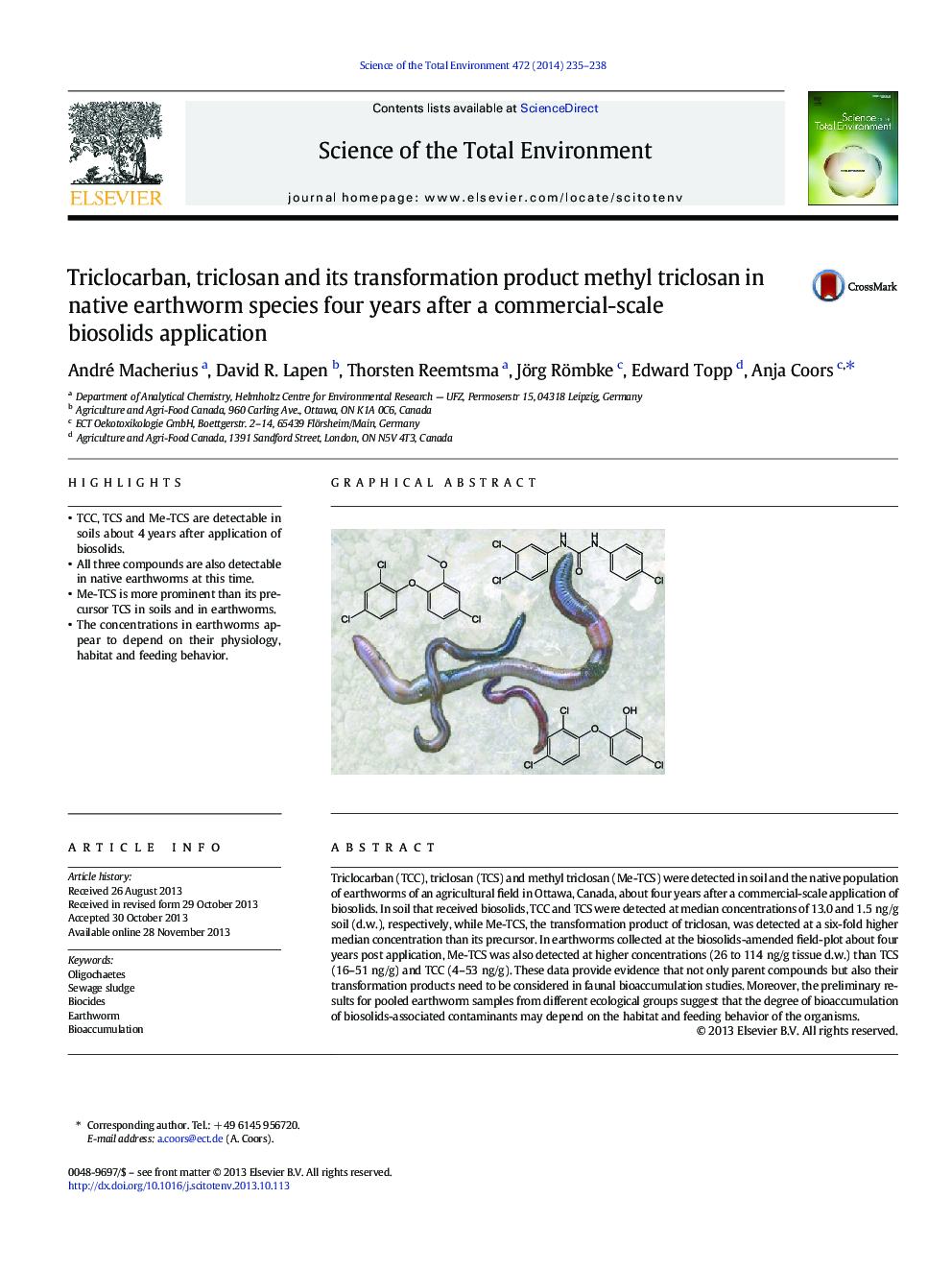| کد مقاله | کد نشریه | سال انتشار | مقاله انگلیسی | نسخه تمام متن |
|---|---|---|---|---|
| 6331109 | 1619792 | 2014 | 4 صفحه PDF | دانلود رایگان |

- TCC, TCS and Me-TCS are detectable in soils about 4Â years after application of biosolids.
- All three compounds are also detectable in native earthworms at this time.
- Me-TCS is more prominent than its precursor TCS in soils and in earthworms.
- The concentrations in earthworms appear to depend on their physiology, habitat and feeding behavior.
Triclocarban (TCC), triclosan (TCS) and methyl triclosan (Me-TCS) were detected in soil and the native population of earthworms of an agricultural field in Ottawa, Canada, about four years after a commercial-scale application of biosolids. In soil that received biosolids, TCC and TCS were detected at median concentrations of 13.0 and 1.5Â ng/g soil (d.w.), respectively, while Me-TCS, the transformation product of triclosan, was detected at a six-fold higher median concentration than its precursor. In earthworms collected at the biosolids-amended field-plot about four years post application, Me-TCS was also detected at higher concentrations (26 to 114Â ng/g tissue d.w.) than TCS (16-51Â ng/g) and TCC (4-53Â ng/g). These data provide evidence that not only parent compounds but also their transformation products need to be considered in faunal bioaccumulation studies. Moreover, the preliminary results for pooled earthworm samples from different ecological groups suggest that the degree of bioaccumulation of biosolids-associated contaminants may depend on the habitat and feeding behavior of the organisms.
Journal: Science of The Total Environment - Volume 472, 15 February 2014, Pages 235-238